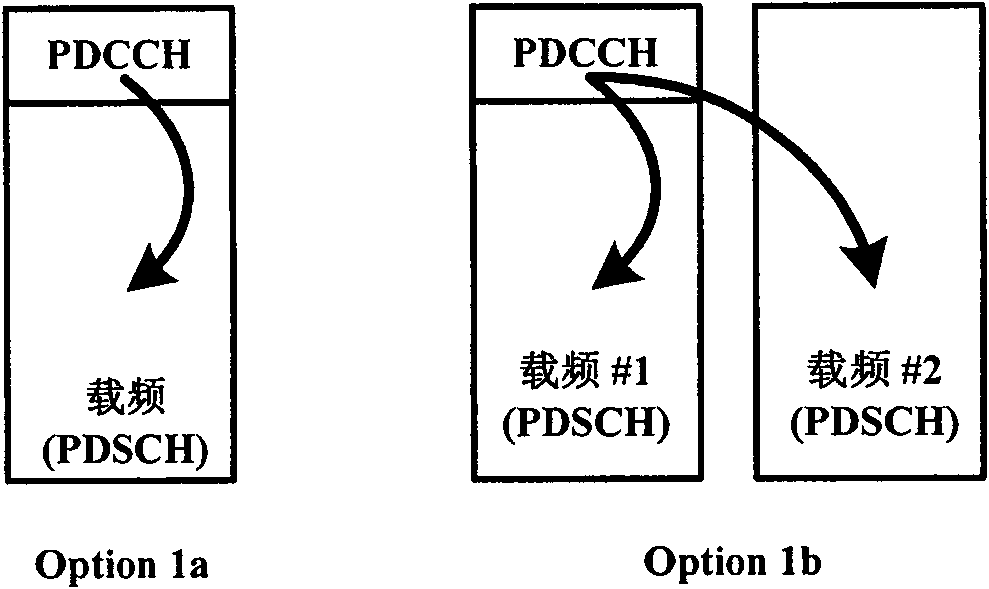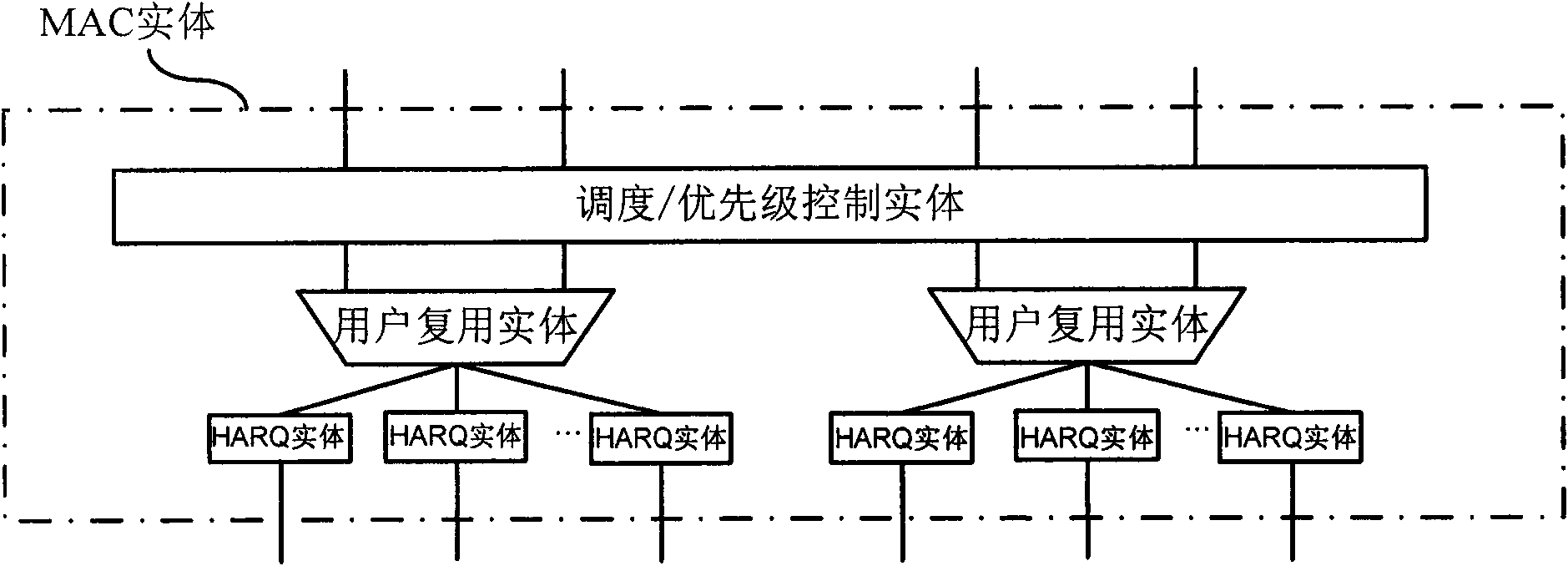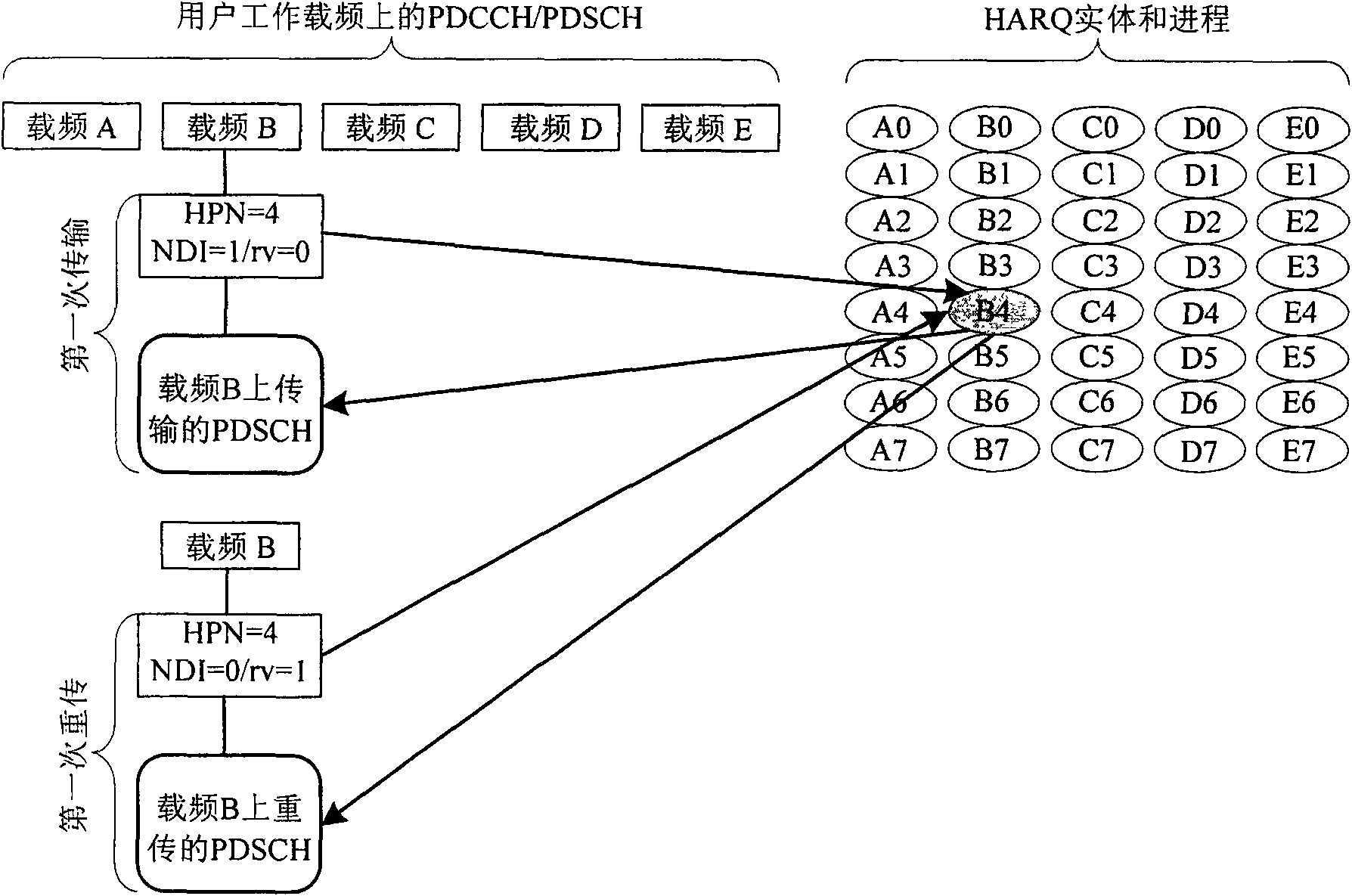Adaptive retransmission method and user equipment in frequency spectrum polymerization system
A spectrum aggregation and user equipment technology, applied in the field of adaptive retransmission method and user equipment, adaptive retransmission mechanism, can solve the problem that the carrier frequency cannot work alone, and achieve the effect of ensuring operation, improving performance, and ensuring normal efficiency
- Summary
- Abstract
- Description
- Claims
- Application Information
AI Technical Summary
Problems solved by technology
Method used
Image
Examples
Embodiment 1
[0065] Such as Figure 5 As shown, the PDCCH and PDSCH for the user equipment to transmit data for the first time and retransmit data can be freely allocated on different carrier frequencies. Such as Figure 5 As shown, assume that the user equipment is assigned five segments of downlink carrier frequencies, respectively denoted as carrier frequency A to carrier frequency E, each segment of carrier frequency corresponds to an independent HARQ entity in one scheduling period, and each HARQ entity corresponds to 8 HARQ processes . Such as Figure 5 The carrier frequency A shown in may correspond to the HARQ processes A0-A7 in the HARQ entity A. Since the PDCCH and PDSCH of the LTE-Advanced user equipment transmission data block can be allocated on different carrier frequencies, assuming that the PDCCH of a certain transmission block of the user equipment is transmitted on the carrier frequency B for the first time, the corresponding HARQ entity is the carrier frequency B cor...
Embodiment 2
[0077] Such as Figure 6 As shown, the PDCCH for the user equipment's first data transmission and retransmission data can be freely allocated on different carrier frequencies, while the PDSCH for the first data transmission and retransmission data is restricted to be allocated on the same carrier frequency. Such as Figure 6 As shown, assume that the user equipment is assigned five segments of downlink carrier frequencies, respectively denoted as carrier frequency A to carrier frequency E, each segment of carrier frequency corresponds to an independent HARQ entity in one scheduling cycle, and each HARQ entity corresponds to 8 HARQ processes . Such as Figure 6 The carrier frequency A shown in may correspond to the HARQ processes A0-A7 in the HARQ entity A. Since the PDCCH and PDSCH of the data block transmitted by the LTE-Advanced user equipment can be allocated on different carrier frequencies, assuming that the PDSCH transmitted for the first time by a certain transmissio...
Embodiment 3
[0085] Such as Figure 7 As shown, the PDSCH for the user equipment's first data transmission and retransmission data can be freely allocated on different carrier frequencies, while the PDCCH for the first data transmission and retransmission data is restricted to be allocated on the same carrier frequency. Such as Figure 7 As shown, assume that the user equipment is assigned five segments of downlink carrier frequencies, respectively denoted as carrier frequency A to carrier frequency E, each segment of carrier frequency corresponds to an independent HARQ entity in one scheduling period, and each HARQ entity corresponds to 8 HARQ processes . Such as Figure 7The carrier frequency A shown in may correspond to the HARQ processes A0-A7 in the HARQ entity A. Since the PDCCH and PDSCH of the LTE-Advanced user equipment transmission data block can be allocated on different carrier frequencies, assuming that a certain transmission block of the user equipment is transmitted on th...
PUM
 Login to View More
Login to View More Abstract
Description
Claims
Application Information
 Login to View More
Login to View More - R&D
- Intellectual Property
- Life Sciences
- Materials
- Tech Scout
- Unparalleled Data Quality
- Higher Quality Content
- 60% Fewer Hallucinations
Browse by: Latest US Patents, China's latest patents, Technical Efficacy Thesaurus, Application Domain, Technology Topic, Popular Technical Reports.
© 2025 PatSnap. All rights reserved.Legal|Privacy policy|Modern Slavery Act Transparency Statement|Sitemap|About US| Contact US: help@patsnap.com



